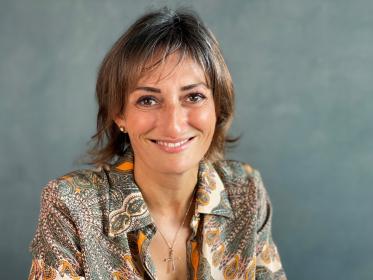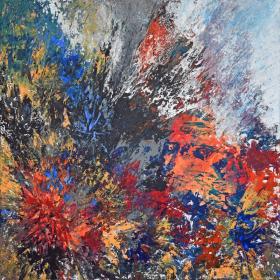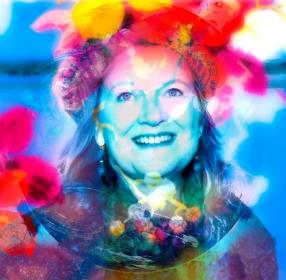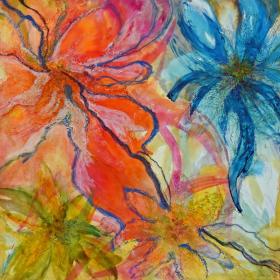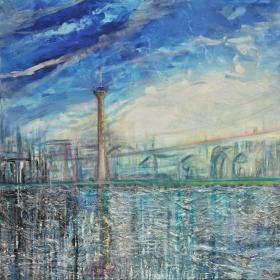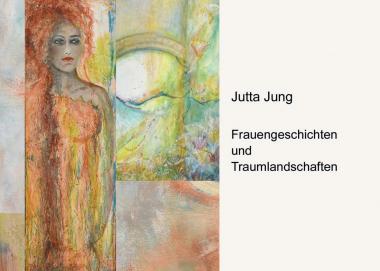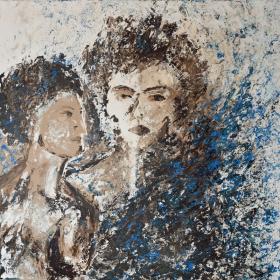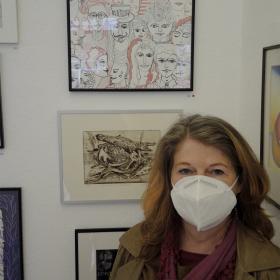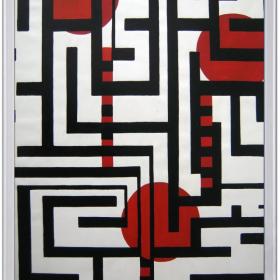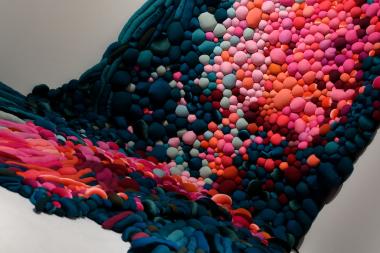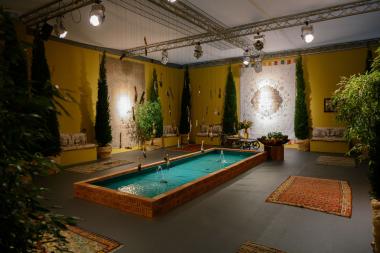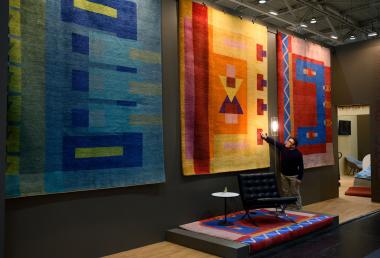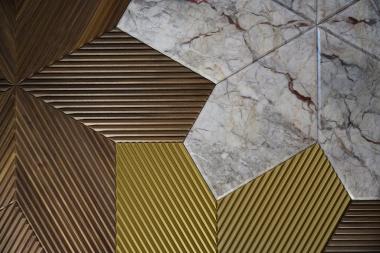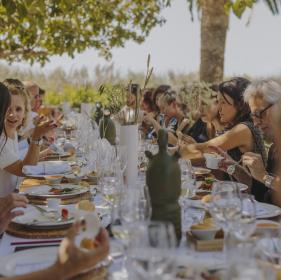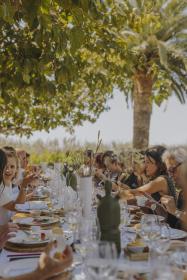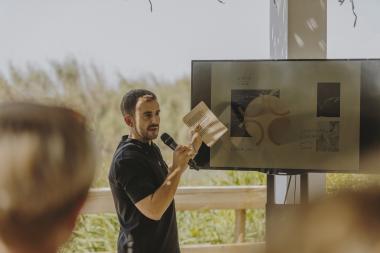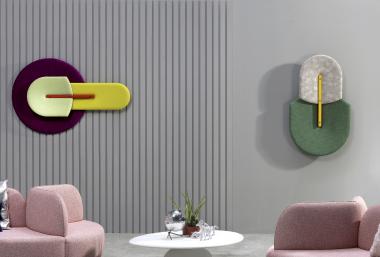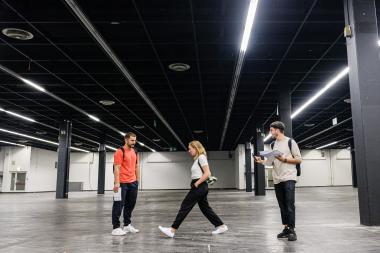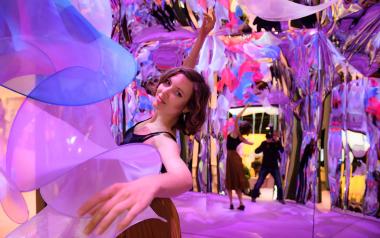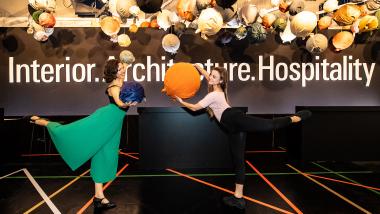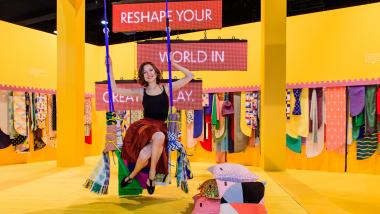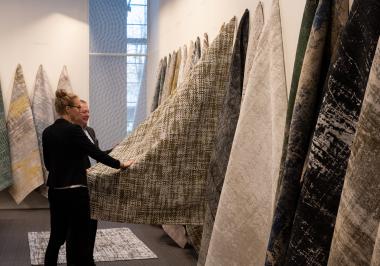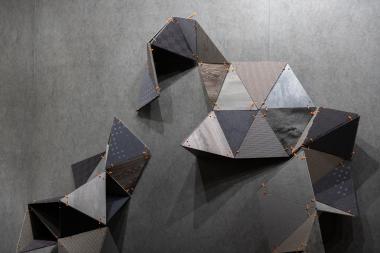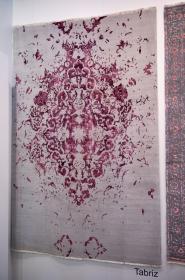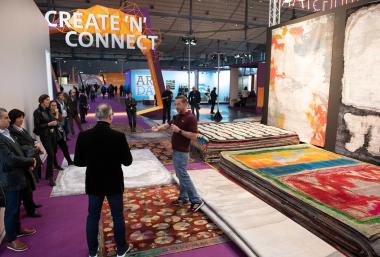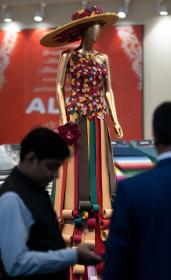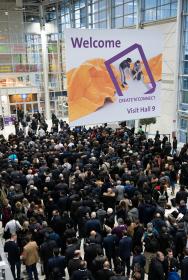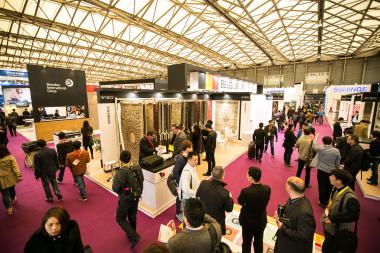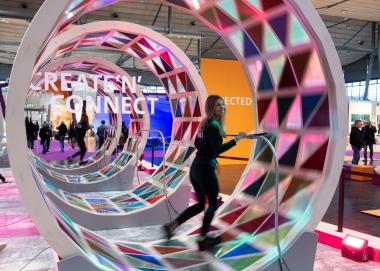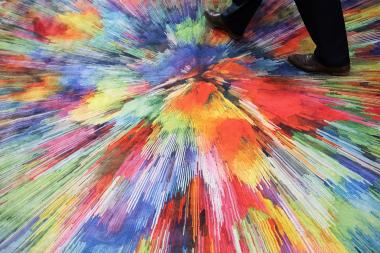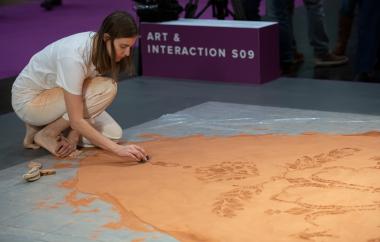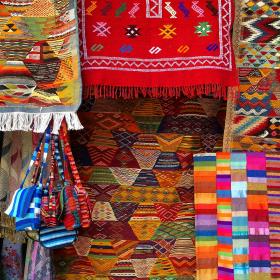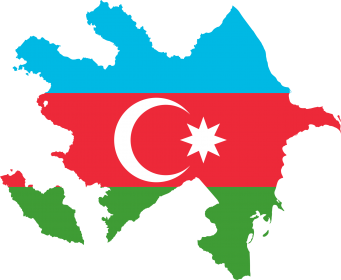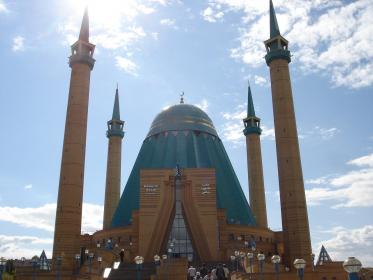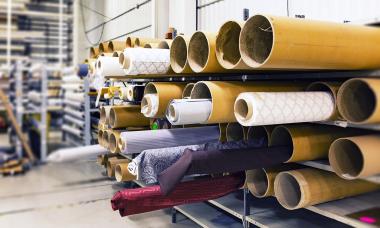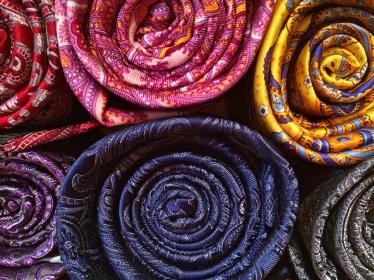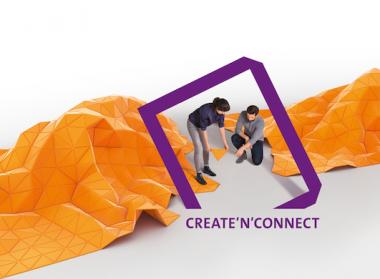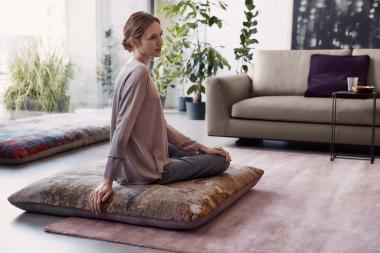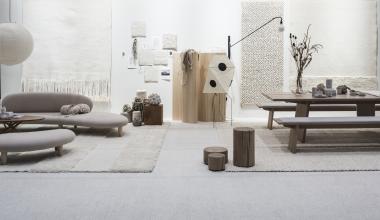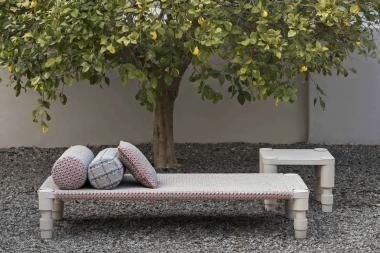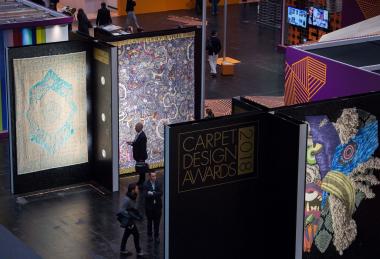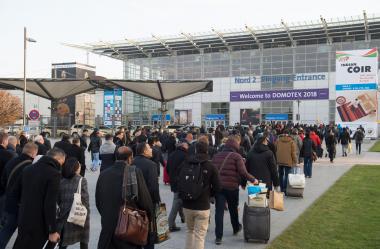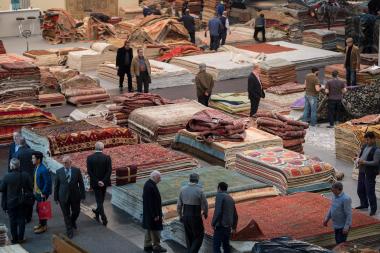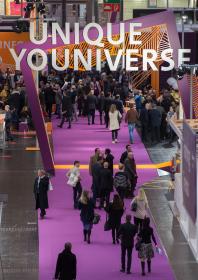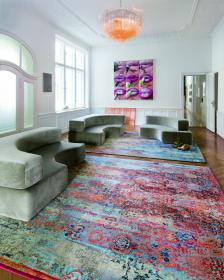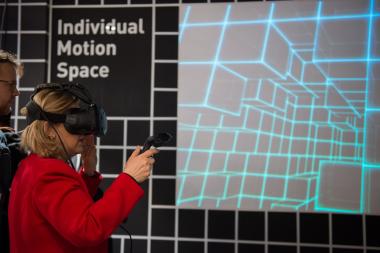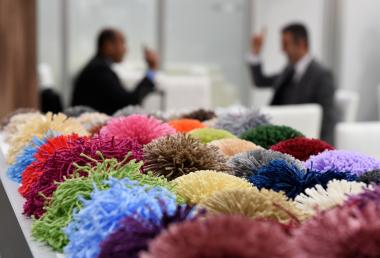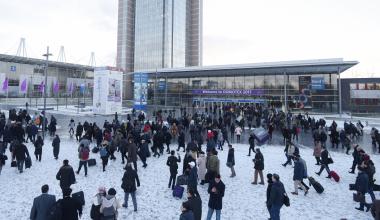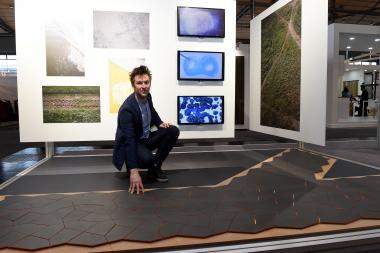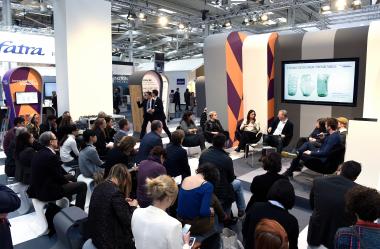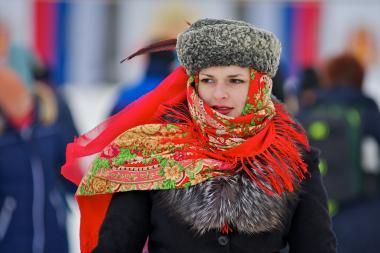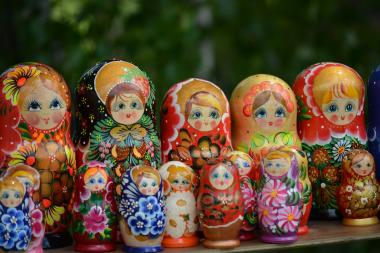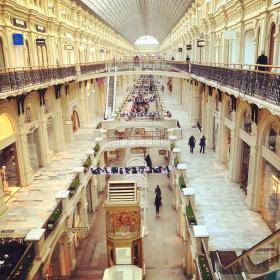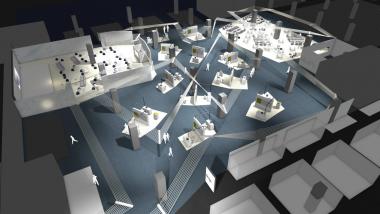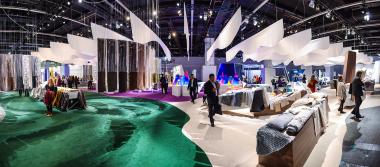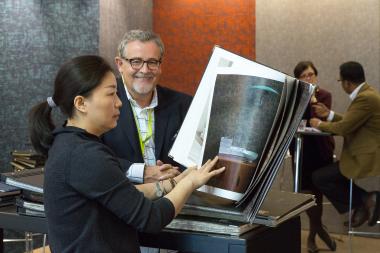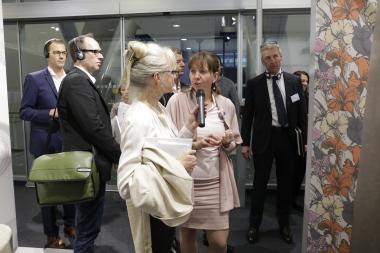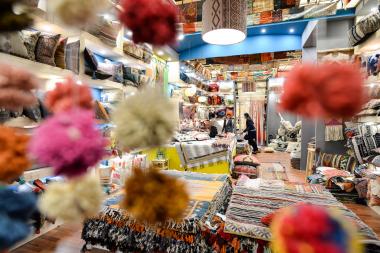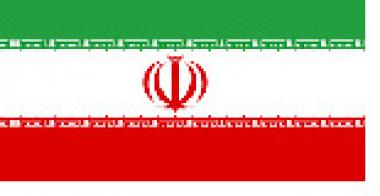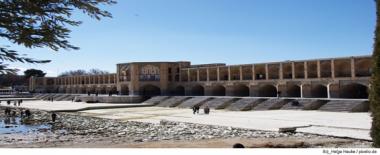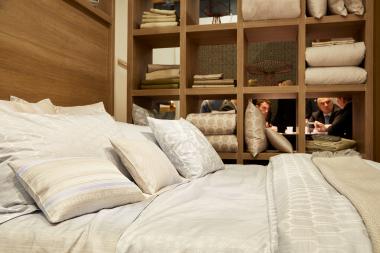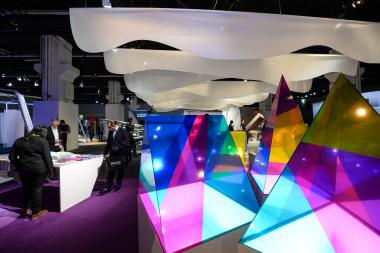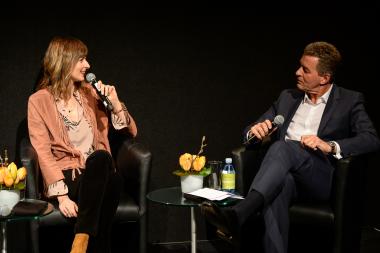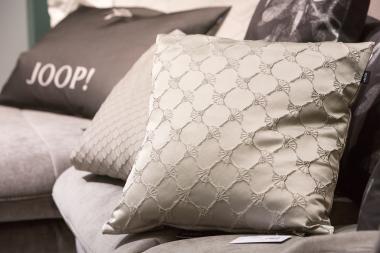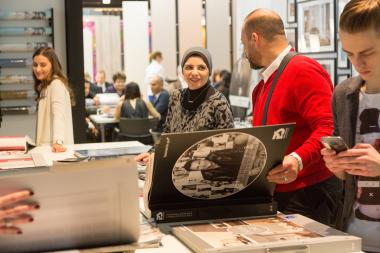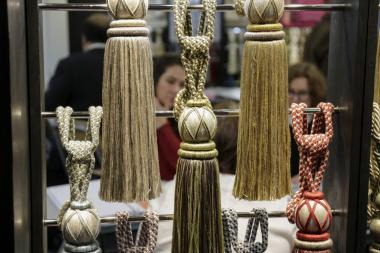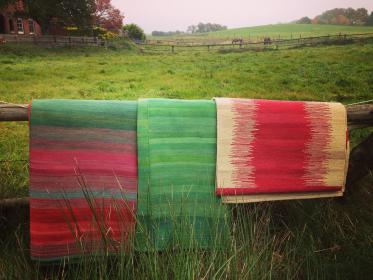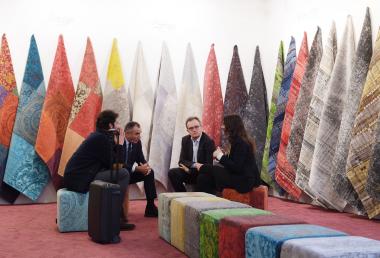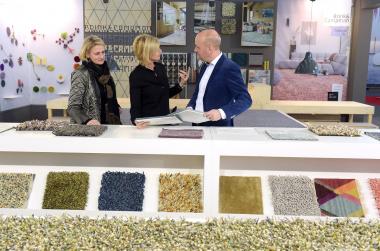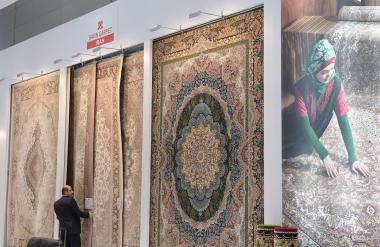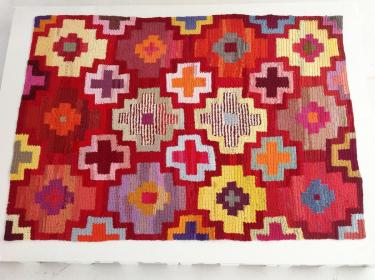"DOMOTEX is and will remain the home of the entire industry"
Interview on the trade fair landscape for floor coverings in Germany
The effects of the Corona pandemic were felt in almost all areas of social and economic life. The trade fair industry in particular was severely affected, with many events cancelled or postponed. With the return to normality, the question arises as to what significance leading trade fairs will have in the post-Corona era and how the competition between different organisers will develop. For its KLARTEXT interview series, Textination talked to Ms Sonia Wedell-Castellano, Global Director of DOMOTEX Events.
After DOMOTEX was unable to take place in 2021 and 2022 due to the pandemic, the trade fair returned in 2023 with a successful event. Nevertheless, the number of exhibitors has almost halved compared to 2020. How do you assess the future importance of leading trade fairs after the industry had to come to terms with online meetings and travel restrictions for a long period of time?
I think it is important to remember that this was the first DOMOTEX since the outbreak of the pandemic, and at a time when the global economic situation is rather difficult. Of course, this situation has made some companies reluctant to participate in DOMOTEX 2023, so we have not yet been able to welcome all companies back as exhibitors at the show. In addition, there were still significant travel restrictions in place at the beginning of the year, for example in China, which simply made it more difficult for our exhibitors to participate in a trade fair abroad. As far as our expectations for the next event are concerned, I can say that many companies - even those that did not exhibit this year - have communicated their interest in wanting to be back at DOMOTEX 2024.
We are certain that leading trade fairs and exhibitions in general will continue to be of great importance in the future! You may be able to cultivate existing customers at digital events, but you can't generate new ones. The focus of DOMOTEX is on products you can touch, on the haptic experience on site. You can't transfer that to the digital world. Even the chance encounters at the stand or in the halls do not happen digitally. But a trade fair thrives on personal encounters, personal exchanges. Business is done between people, not between screens. Both exhibitors and visitors have told us quite clearly that they want and need DOMOTEX to be a trade fair where people are present.
The degree of internationalisation among DOMOTEX visitors was between 62 and 67 percent in the last three years of the event before the pandemic; in 2023 it even reached 69 percent. Would you agree that leading international trade fairs in Germany are now primarily only important for export-oriented companies? And what does that imply for the economic efficiency of trade fairs?
Certainly, leading international trade fairs in Germany are particularly interesting for export-oriented companies, but not exclusively. That doesn't change anything at all about the profitability of trade fairs. We generate our turnover with all our exhibitors, regardless of whether they are export-oriented or only interested in the Germany-Austria-Switzerland region. That's why satisfied exhibitors are very important to us. And an exhibitor is satisfied when he can do good business or make good contacts at our fairs. It's more and more about the right quality of visitors, less about the quantity. In any case, all our exhibitors very much welcome international visitors!
For the 2024 edition, Deutsche Messe has announced that its DOMOTEX concept has been changed to focus on different areas each year: Carpet & Rugs in the odd-numbered years and Flooring in the even-numbered years. Flooring covers wood and laminate flooring, parquet, design flooring, resilient floor coverings, carpets, outdoor flooring and application and installation technology. Carpet & Rugs stands for hand-made carpets and runners as well as for machine-woven carpets.
Yet you say that the Carpet & Rugs segment in particular needs an annual presentation platform, while the flooring segment would like to see DOMOTEX every two years as the central platform for the industry due to longer innovation cycles. Doesn't that actually mean that floor coverings are only in Hannover every other year, but carpets continue to exhibit annually in Hannover? Could you clarify that?
DOMOTEX - Home of Flooring will take place in 2024 and in all even years: This is a DOMOTEX with all exhibitors as we know them from the past. So, from herringbone parquet to outdoor coverings, oriental carpets and contemporary designs - everything, under one roof. In the odd years, i.e. from 2025, there will then be DOMOTEX - Home of Carpets and Rugs, with a focus on suppliers of fitted carpets. The background to this is that the hard flooring industry had wanted DOMOTEX to be held every two years. After this year's DOMOTEX, the suppliers of wall-to-wall carpets have again clearly spoken out in favour of an annual platform. With our new focus model, we are meeting the needs that the market has expressed to us.
Messe Frankfurt has declared a new product segment for next year's Heimtextil - interestingly, under the name Carpets & Rugs. While the watchword at DOMOTEX in the even year 2024 is Flooring, Heimtextil offers an alternative trade fair venue for carpets. How do you assess this situation - do exhibitors now have to choose between Hannover and Frankfurt and what does this mean for the split concept?
No, exhibitors from the carpet sector will not have to choose between Hannover and Frankfurt in future - because DOMOTEX is and will remain the home of the entire industry, even in the even years! At DOMOTEX, Home of Flooring means, as I explained earlier, that we present the entire spectrum of floor coverings and carpets. But what is even more important is that we have been told by exhibitors and many visitors that the market does not want to be split up any further. Through the many (small) events, the flooring industry is only competing with itself. To put it bluntly: if only some of the exhibitors take part in ten events, it can't really work. The critical mass is missing. A trade fair is only as good as its participants and they often don't have the time to visit several events.
Another innovation for DOMOTEX is the country focus. What do you expect from this and why did you choose "Insight Italy" for 2024?
With our new special presentation, we want to arouse the curiosity of our visitors - especially retailers, architects and contractors - and highlight the international character of DOMOTEX. After all, what could be more exciting than getting to know a country in depth?
That is why the INSIGHT concept will in future feature a different country at each DOMOTEX - Home of Flooring. Special exhibition areas will showcase innovations and products, present partnerships with designers and universities, and stage trends. In addition, the conference will provide insights into the respective market and references.
In 2024, we will start with Italy, a very design-savvy and creative country from which many trends come.
Deutsche Messe wants to strengthen the Hannover venue for the leading trade fair DOMOTEX and to hold additional fairs only in Shanghai and in Gaziantep. There will be no Carpet Expo in Istanbul. What influence does the changing entrepreneurial landscape in terms of production countries and markets have on your international concept?
First of all, it must be noted that the business landscape for carpets has not changed in Turkey. Here, only the associations have decided to organise a carpet fair in Istanbul in the future. The background is the continuing visa problem for Turkish exhibitors in Germany as well as the immensely high inflation in Turkey, which makes foreign participation extremely costly for Turkish companies. We would have liked to organise a carpet fair in Istanbul together with the Turkish associations, but not at any price and not on their terms alone. Hannover is and will remain the international platform for DOMOTEX, and we will continue to strengthen this location.
But of course, we also keep an eye on the global market and keep our eyes and ears open at all times, for all our brands, by the way. It was only in this way that DOMOTEX asia/Chinafloor in Shanghai was able to develop into what is now a very successful event. The potential was there, we were in the right place at the right time. If we hadn't seized the opportunity at the time, there would still be a strong floor coverings trade fair in Shanghai - but it would be run by one of our competitors and it wouldn't be called DOMOTEX today.
Many thanks to Ms Sonia Wedell-Castellano for the KLARTEXT.


